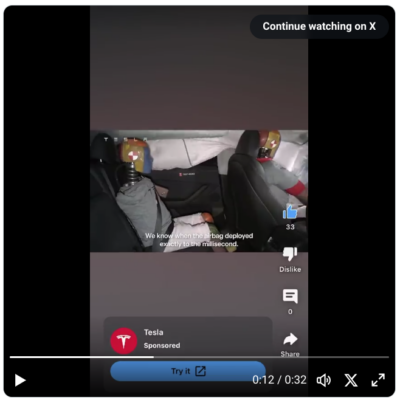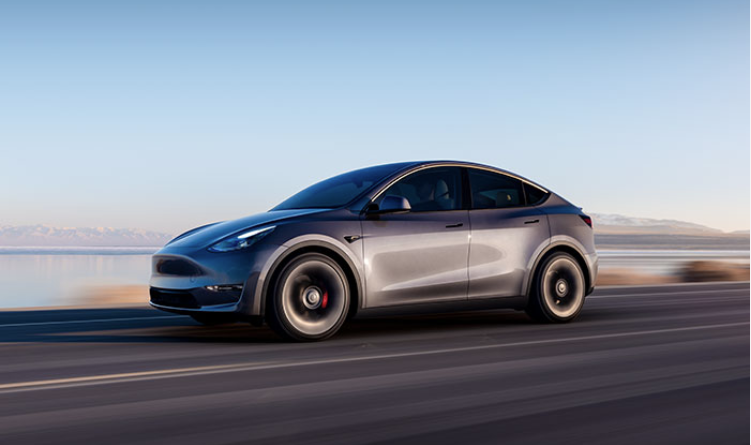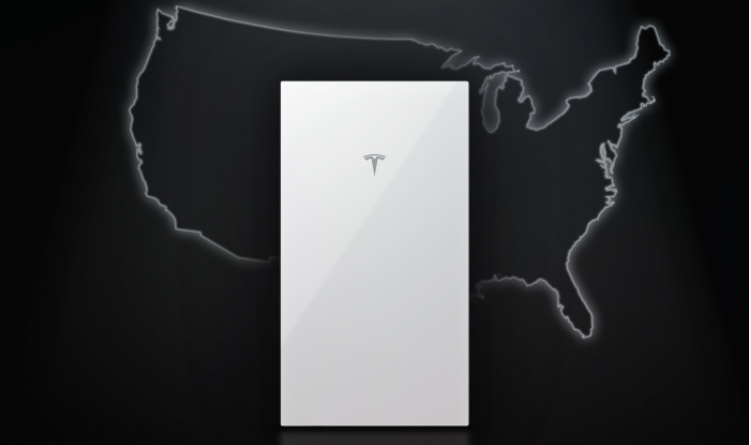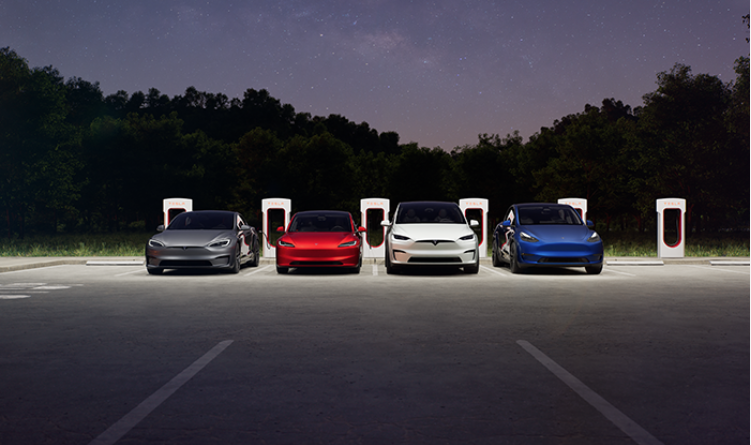Sign up for daily news updates from CleanTechnica on email. Or follow us on Google News!
How do you think Tesla marketing compares to the automotive industry as a whole? Remember: Tesla swore off traditional advertising early on, insisting that word-of-mouth — from personal referrals and on social media — would have enough guts to promote the company. CEO Elon Musk mocked legacy automakers who spent profits on paid advertising.
But these days, paid ads for Tesla are popping up across social platforms, including on Facebook, YouTube, and lots of other places.
What’s behind the Tesla marketing turnabout?
Vivvix, a MediaRadar company, analyzed a sampling of both Tesla and its competitors. According to this sample, Tesla’s spending exceeded $6.4 million in advertising during 2023. Digital channels such as internet search and display ads, mobile, online video, and paid social comprised the bulk of that sum.
In January 2024, Tesla invested $420,000 in advertising, which is 83 times more than last January (around $5,000). What’s changed? What other changes might be forthcoming at Tesla?
Tesla Marketing as a Match for Changing Times
Up until now, unlike traditional automaker approaches, Tesla has maneuvered fluidly between virtual and physical touchpoints, creating integrated opportunities between the online and the tangible. Since the company’s beginning, its website has been a new iteration of a showroom, offering customers the opportunity to choose, customize, and order online. Offline customer events and gatherings have given Tesla fans the chance to meet and share, with the Tesla vehicle becoming the common denominator that fosters their common appreciation and collegiality.
Arguably, Musk’s initial allure captured fans and created a loyal and feisty Tesla following. The effect of that winning approach has thinned over the last few years due to Musk’s mercurial nature, alienating much of the very audience that foisted the company to prominence. Remember the reveal of the Cybertruck and its shattered windshield glass? The Wall Street Journal called Tesla’s Cybertruck “more marketing than profit machine.”
The company also differed from its competitors in its R&D. On a per vehicle sold basis in 2021, Tesla’s $2,984 in R&D spend per car was far greater than that of other car manufacturers. It was higher than the collective amount going to R&D per car from three of the other automakers (Ford, GM, and Chrysler) combined.
Then the residual effects from Covid slammed down on Tesla, and its stock lost approximately 69% of its year-to-date value on December 30, 2022. It was one of the most challenging periods in the company’s entire 20-year history. One reason for its downfall was missed targets — the company sold fewer cars than Wall Street had expected. The pool of original early adopters had waned, and new Tesla audiences were stymied by higher-than-desired interest rates, continued range anxiety, and trepidation about EV safety. Fortune predicted the impasse for Tesla that China’s BYD Co. created with its much fresher lineup. Tesla’s newest vehicle, the futuristic-looking Cybertruck, still hasn’t reached volume production and is at least a year away from profitability.
 Chip in a few dollars a month to help support independent cleantech coverage that helps to accelerate the cleantech revolution!
Chip in a few dollars a month to help support independent cleantech coverage that helps to accelerate the cleantech revolution!
The buzz online and in traditional showrooms was that CEO Elon Musk would need to take a step back and think seriously about the famous Tesla marketing strategy. How else would the company reach its pronouncement of 20 million cars delivered annually by 2030?
“We’ll try out a little advertising and see how it goes,” he announced to investors in Austin, Texas, at the May 2023 Annual Shareholder Meeting.
Now we’re in 2024, and the Tesla stock has dropped again — this time it’s more than a $230 billion loss in value in less than 3 months. Competitors now have electric vehicle models to deepen the market, and no longer is Tesla the only all-electric game in town.
Voila! Suddenly, Tesla is spending money on ads. The newfound Tesla marketing budget has been applied to YouTube, Facebook, Instagram, Google, and, of course, X (formerly known as Twitter and owned by Musk).
Video ads boast that the Tesla Model Y is “the #1 most American-made car.” An experimental Google ad promises a Model Y lease for $399 a month. Other ads zoom in on Autopilot or roomy interiors.
From February through the end of March of this year, Tesla offered free Supercharging credits and FSD Capability package transfers for trade-in vehicles, valid for new vehicles. Musk had made it a point in a leaked internal email for staff to push the FSD subscription at a cost of $12,000 as Teslas were delivered to customers. It’s another innovative marketing tactic to elevate sales numbers.
Pushing FSD covers the gap that exists in the company’s catalog until a lower priced Tesla is introduced. During the May 2023 Annual Shareholder Meeting, Musk teased a future Tesla model that would be compact and modestly priced. At the time, I asked, “Would a Model C in your parking space make you happy?” For a lot of people, the answer would definitely be “Yes.”
As our editor Zachary Shahan noted, “Targeted advertising can be very cost-efficient, and conventional TV advertising of the past can be very cost-inefficient.” Here’s an example of that targeted Tesla marketing. I’ve gotten a number of pitches over the past few months from Tesla via email. They’d like me to trade in the Model Y for a newer model. To me, the 2021 Model Y is still brand new, and I’m not even considering making a move. Nonetheless, I’m part of the Tesla family, and don’t family members do what’s best for the clan?
A typical auto buyer weighs a number of factors, including model styling, features, price, and ease. “When you look at car buying in general, we’re trying get to the next set of EV adopters,” chief financial officer Vaibhav Taneja said during an investor call in October.
Tesla’s advertising journey includes commercials on YouTube that showcase the safety performance of its vehicles. We know from our CleanTechnica report, The EV Safety Advantage, that electric vehicles are rated highly safe.

As always, it’s fascinating to watch the Tesla evolution. Its marketing is only one piece of its complex approach to success. What’s next? Only Elon knows.
Have a tip for CleanTechnica? Want to advertise? Want to suggest a guest for our CleanTech Talk podcast? Contact us here.
Latest CleanTechnica TV Video
CleanTechnica uses affiliate links. See our policy here.









